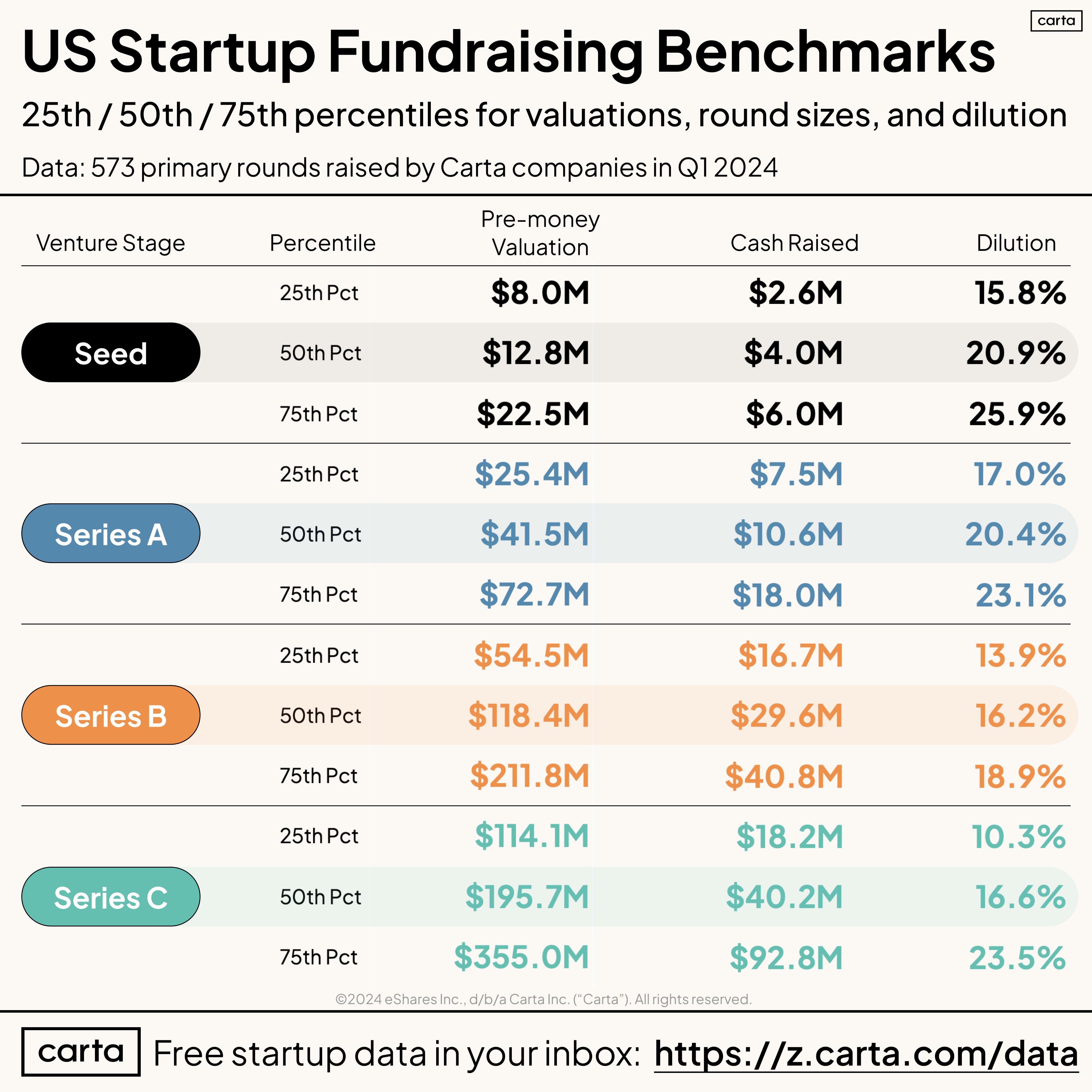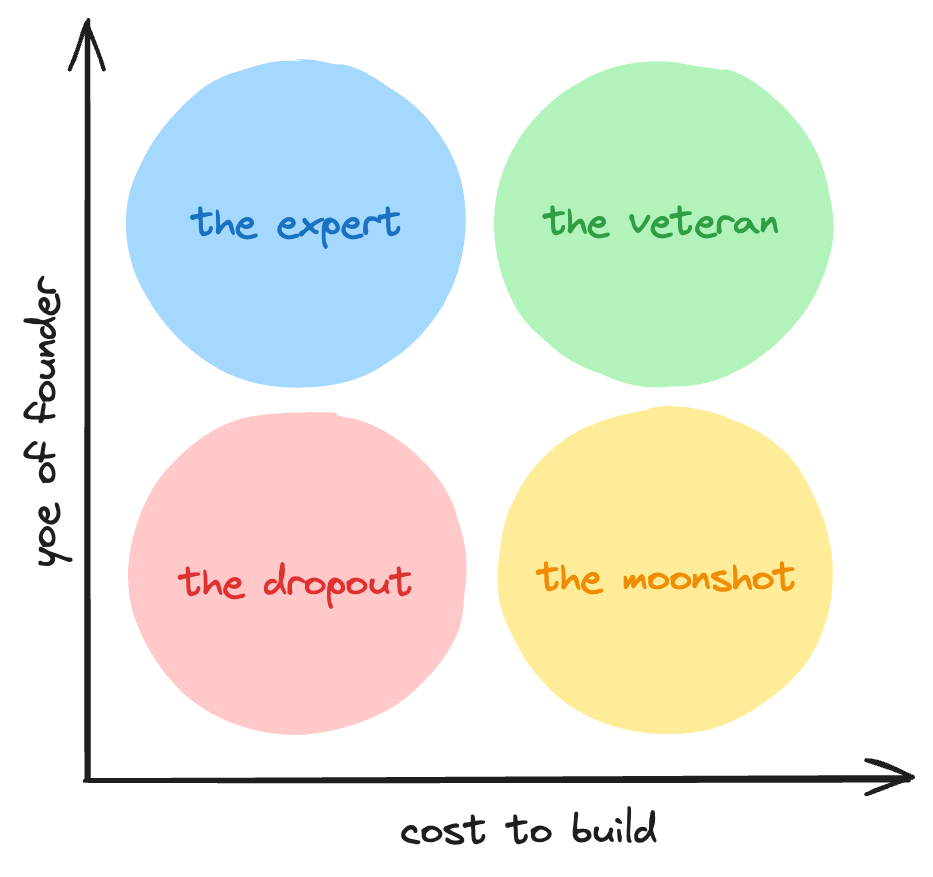Pre-seed vs Seed Pt 2: Seed
There has never been a better time to raise a seed round. This may surprise you if you thought 2021 was the easiest time in history to raise venture capital. 2021 saw growth stage companies (i.e. companies that have already raised several rounds) raise incredibly quickly at unprecedented multiples (i.e. the ratio of the company’s total valuation to its yearly revenue), which led to a subsequent reckoning that has significantly slowed the growth market. That said, there are more early-stage funds today than there were three years ago, and existing venture investors are starting to look at earlier stage opportunities. But what exactly is a seed-stage company, and how do they get funded?
Seed Funding: The Product-Market Fit Stage
As a seed stage company, your main goal is to prove product-market fit. PMF is a vague term that really just means you are building something that people want and are willing to pay for, in other words, there is a “market” for your “product”. We’ll go into more detail about what this means later, so all we need to know for now is that raising a seed round usually comes down to convincing investors that with the right amount of capital, you can convince a bunch of people to pay for what you are building. It’s worth noting that depending on a founder’s background, they may be able to raise a seed-sized, or even A-sized round with very little early work on the company, which often gets called a “seed” round. These are generally such exceptional cases, so let’s narrow what we mean by “seed”. Nowadays, seed funding is a second round of financing, with the first round coming either from angel investors, institutional pre-seed investors, or just by bootstrapping with personal capital. A seed founder has probably been working on their company for at least six months, and has built out a demo or a significant early product design. Even with this narrower definition, there are still a ton of factors that determine the nature of a seed raise, so let’s dive in.
How big is a seed?
A seed round is usually the first significant round of funding for startups, typically around $2-6m. Ten years ago, $1m was considered a beefy seed, but now it’s on the lower end, and for experienced teams we occasionally see seed-stage companies raising closer to $10m. In my last post I covered some of the trends in seed raises, and if you read tech news you are likely to some absurdly large seed rounds that make headlines. Keep in mind these are atypical, and the vast majority of seed raises are under $10m. There is also no one-size-fits-all approach to capitalizing a company, so it’s up to the founder to know what is ultimately best for their business.

What does a seed-stage company look like?
This depends a lot on the industry, the founder, and the location of the company. Let’s start with the “easiest” example: a technical founder based in San Francisco building a pure software product. At this point, they likely have a cofounder, raised a pre-seed 6-12 months ago, and have spent all their time so far doing customer research and building out an early product. They might have design partnerships (people using their early product for free in exchange for giving feedback on what they would want the product to do in order to pay for it), some online community, or a working demo. In many cases, especially for software companies, they often have launched a product with some traction, have some early revenue, and a clear path to scaling.
Compared to a pre-seed, a seed-stage founder is expected to have a lot more “figured out”. In practice, this means a strong presentation and company thesis, as well as a clear plan to hitting their next milestone before raising a series A. There are a ton of different milestones you can come up with, but one you really can’t go wrong with is $1m in annual revenue. For a software company, whether you are selling to consumers or enterprises, this typically means you have built up a customer base paying a recurring subscription, totaling $1m per year. The actual milestones and preparation that make sense for your business can vary enormously, but we can simplify a little bit by looking at the two highest order bits: years of experience of the founder and cost of building the company.

-
The Dropout
This is a person will little to no experience building a low-cost, high margin software business. A founder at this stage is likely bootstrapping with money from previous internships or parents, or has already raised a pre-seed (either through normal venture financing or an accelerator like Y Combinator). The expectation at this stage is usually that the founders can build most of the product by themselves, so you’ll want to demonstrate that you can build a lot of product incredibly quickly. In this case, it’s useful to take investor meetings early before you are actually raising, so when you go out to pitch, you can clearly show the progress you’ve made in that timeframe.
-
The Expert
This is a founder who has worked in software for a long time, typically as an engineer or manager, and is now leaving to start a software company. Given that they are deeper in their career, they may not spend a ton of time implementing code, as their workflow consists more of design and review of systems. Experts are usually capable of building a ton of the product themselves, but their time is likely best served elsewhere. As an experienced engineering manager, you can get away with raising a seed on no product development if you come in with clearly strong customer and talent pipelines. The idea is that you’ve already demonstrated you can lead a team to build high quality useful software quickly, so if you have funding for headcount you can do it again on a specific space. The investor conversations here often focus on really understanding the market opportunity and what you accomplished in your last roles
-
The Moonshot
The decision-making process for investing in more capital-intensive businesses often looks a little different. Investors have to believe not only will this person be a greater builder in the area they are working on, but also capable of raising many rounds of funding down the line. Every round of capital gets successively more difficult, so you have to come off as someone people are fighting to give money to. It’s a hard thing to balance, and the track record of young founders in highly expensive businesses so far is not great. But there is a new generation of hard tech founders in their early 20s, and if you believe the cost of developing hardware will come down, it might become feasible to transfer all of the energy around investing in dropouts working on software to other types of businesses. Still, the key here is building a cult of personality.
-
The Veteran
There is no easy way to raise money for an expensive business, but often experience actually matters a lot more here than it does in low-cost software. See, in software founders can build most of the product themselves, with the only core competency being coding. In hardware or biotech (two common capital-intensive industries), the founder has to work with many different partners (manufacturers, labs, distributors, researchers, etc.) and hire large teams with diverse skill sets. Navigating all this is extraordinarily complicated, especially if starting from scratch. That said, knowing how to fit all these pieces together is actually a huge moat for many early hardware startups, and can be a huge advantage for people coming in with meaningful experience here. Your job fundraising is to show how complicated the process of starting your company is, and why the barrier to entry is simply too high for anyone who doesn’t have your background.
Where do you raise a seed from?
Basically anywhere that has “venture” or “capital” in the name. Until recently, pre-revenue seed deals were only done at seed-focused funds, and funds labeled “early-stage” or “multi-stage” focused mostly on A’s and beyond, only investing in seed rounds that had very meaningful signs of traction and ideally some revenue. With high competition and expensive prices for later rounds, every firm has begun to see the favorable economics of investing very early, and has some process for seeds. It’s likely you still need to show a bit more traction to raise a seed from a larger firm than you would pitching to a pre-seed and seed firm, but you can assume that essentially everywhere, except maybe explicit growth funds, are capable of writing seed checks in companies they are excited about.
So who should you raise a seed from?
There are a few things you should consider that aren't talked about as often: signaling for future fundraises, board seats, and strategic partnerships.
Who you raise your seed round from can signal to future investors about whether the company is an appealing investment, but can also sometimes lead to trouble. If you raise a seed from a multistage, and they don’t invest in your Series A, other firms might view this as a negative signal. On the other hand, if you work with a firm that doesn’t invest in Series A rounds, you lose the opportunity to raise an insider round, but you minimize signaling risk.
Typically, investors at the seed round won’t ask to take a board seat, but in certain circumstances it can be super helpful. Board members can provide valuable guidance, oversight, and connections. They also influence the direction of your company, which can sometimes have unintended consequences. Make sure you are comfortable with the tradeoff you are making for their support and expertise.
¯\_(ツ)_/¯
Ultimately the decision, timing, and approach to raising a seed round looks very different for different types of companies and founders. How you choose to go about it will depend a lot on what you are optimizing for and what tradeoffs you’d like to make. There is no right answer, other than to go into the process with as much information as possible. Talk to founders who have gone through the process, talk to investors (understanding their advice is always a little biased), and most importantly, don’t let fundraising be too much of a distraction from building.